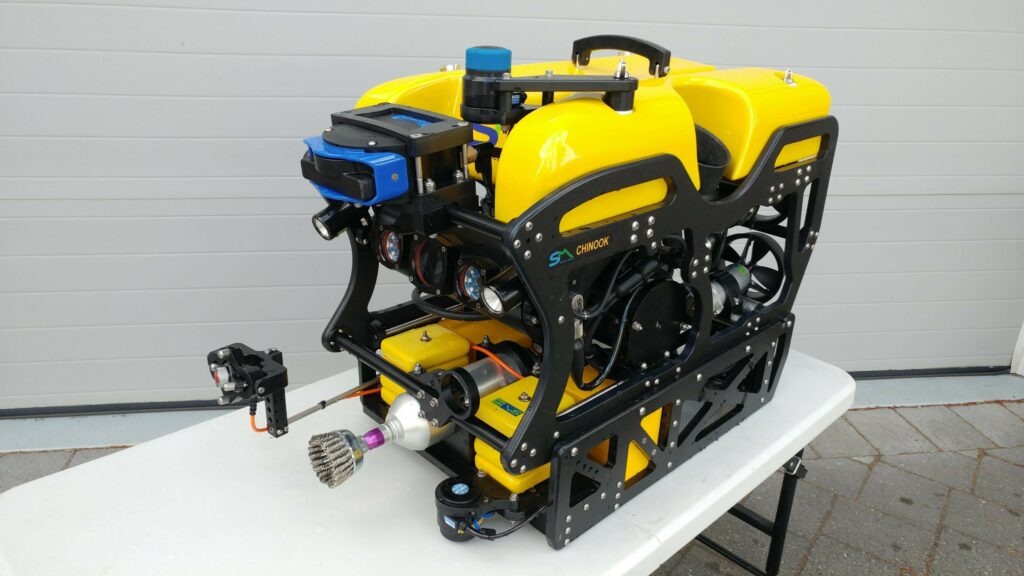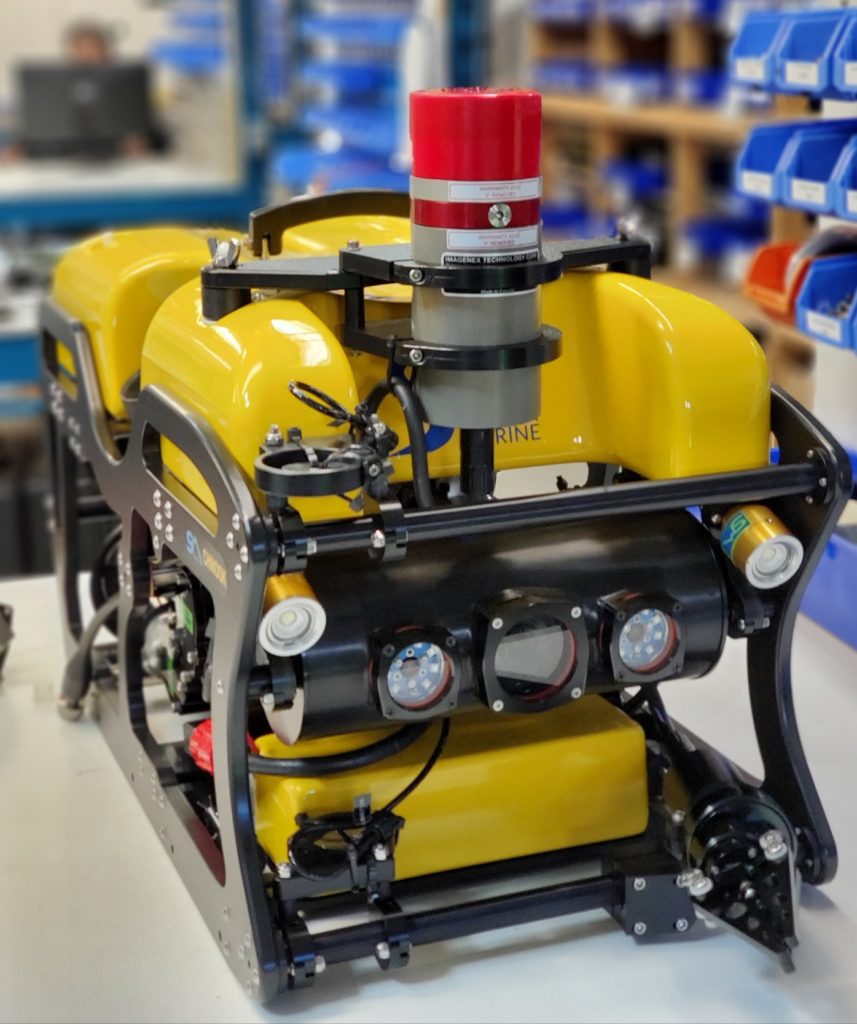ROV Sonars (Sound Navigation and Ranging) are a technology that use sound waves to navigate, communicate, and detect objects underwater. It works on the principle of sending out sound waves and measuring the time it takes for these waves to bounce back after hitting an object. The data collected from the returning sound waves is then used to create images or maps of underwater environments and objects.
Here’s a basic overview of how sonar works.
- Transmitter. A sonar system starts by emitting a sound signal, typically in the form of a pulse of sound waves, from a transmitter. The transmitter can be a specialized underwater speaker or transducer.
- Sound Waves Propagation. The emitted sound waves travel through the water until they encounter an object, the seafloor, or any other boundary.
- Reflection. When the sound waves encounter an object or boundary, they bounce back (reflect) towards the source of the signal.
- Receiver. A receiver, often located near the transmitter, detects the returning sound waves.
- Time Measurement. The time it takes for the sound waves to travel to the object and back to the receiver is measured. Since sound travels at a known speed through water, this time helps calculate the distance to the object.
- Data Processing. The collected time and distance information can be processed and used to create images or maps of the underwater environment. By analyzing the patterns of the returning sound waves, it’s possible to determine the shape, size, and position of underwater objects.

Sonar is a common tool in various industries, including maritime navigation, fisheries, hydrography, and underwater exploration. In the remotely operated vehicle (ROV) industry, sonar plays a crucial role in helping ROV operators navigate, locate objects, and gather information in underwater environments.
ROV Sonars at SEAMOR Marine – Some Examples
- Obstacle Avoidance. Sonar sensors can help ROVs detect underwater obstacles, structures, or hazards, allowing pilots to fly the ROV safely and avoid collisions. This is particularly helpful in conditions with poor visibility. Read more about obstacle avoidance in the field and a SEAMOR ROV use case for disaster relief; Japan earthquake 2011.
- Search and Recovery. Sonar can be used to locate submerged objects, wreckage, or other items of interest on the seafloor. This is particularly valuable for search and recovery operations like this one in the Arctic; “Canadian ROV Breaks RCMP Record of Deepest Recovery Mission.“
- Mapping and Surveying. Sonar data creates detailed maps and surveys of the underwater terrain, seafloor, and submerged structures.
- Environmental Monitoring. Sonar technologies can help monitor underwater ecosystems, habitats, and marine life by providing insights into underwater conditions and changes. Or, in SEAMOR’s case, they also help with marine plastic clean ups.
- Scientific Research. ROV Sonars can assist researchers in studying underwater geology, marine biology, and other scientific phenomena.
Recommended ROV Imaging Sonars by SEAMOR Marine
- BluePrint Oclulus M3000D
- BluePrint Oclulus M1200D
- 965A Sonar Blueview M900
- Tritech Gemini 720is
- Tritech Gemini 720im
- Tritech Gemini 720ik
- Kongsberg M3 Sonar
Don’t know which one is best for you, your ROV, and your operation? Reach out to talk to our industry experts.

